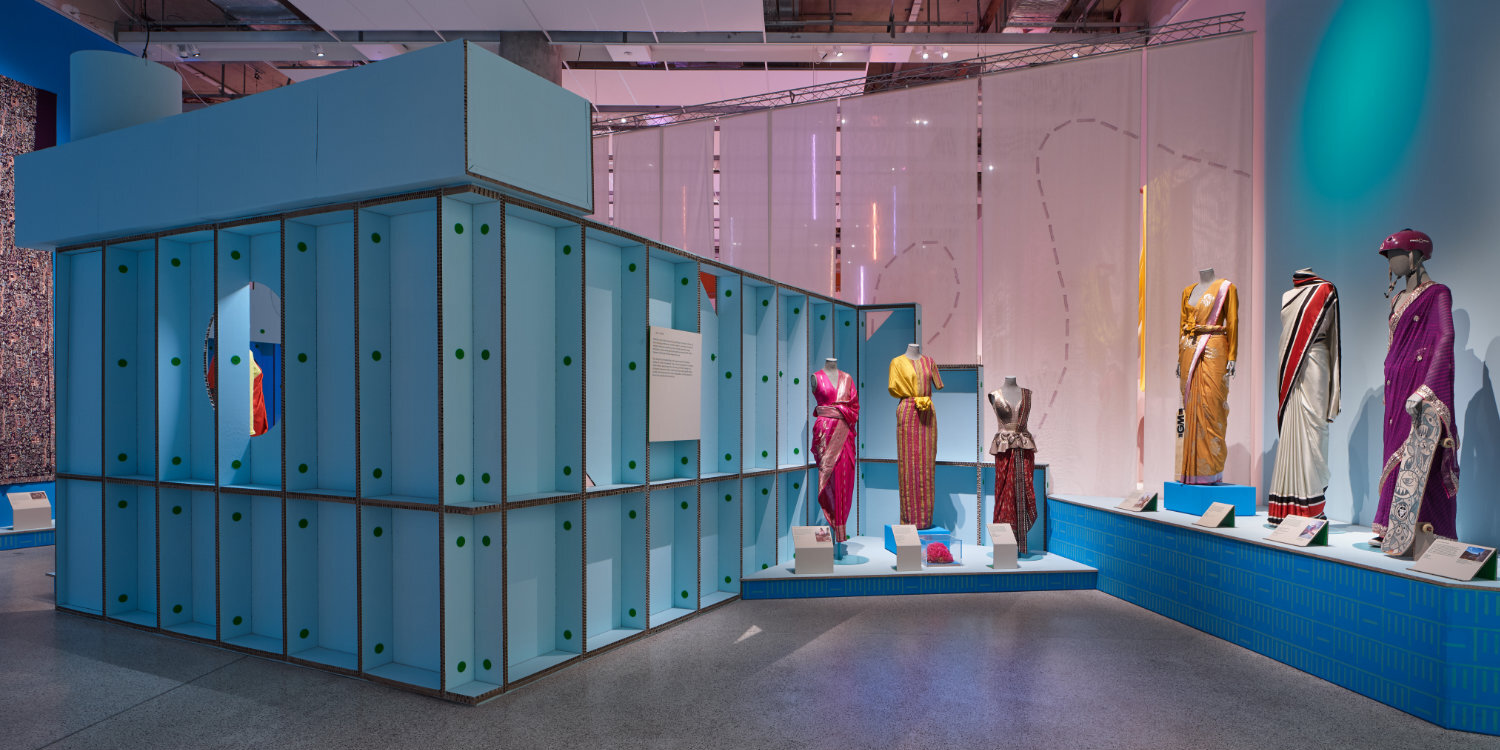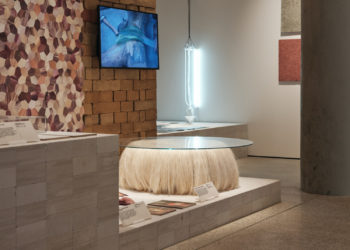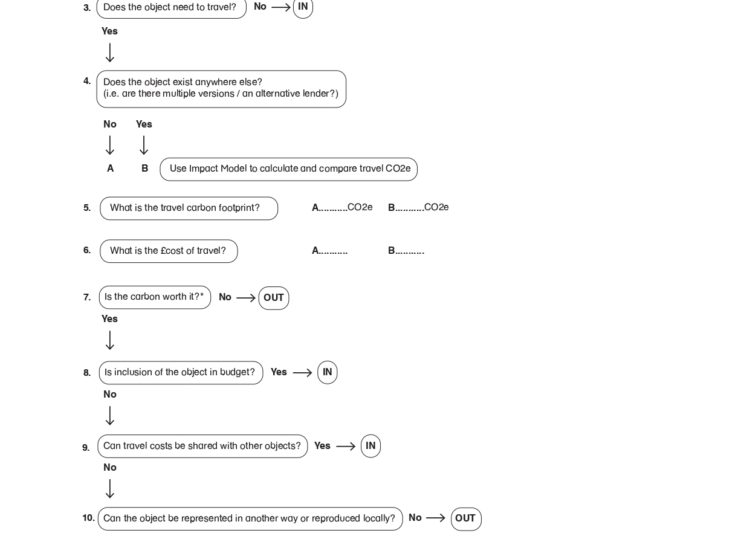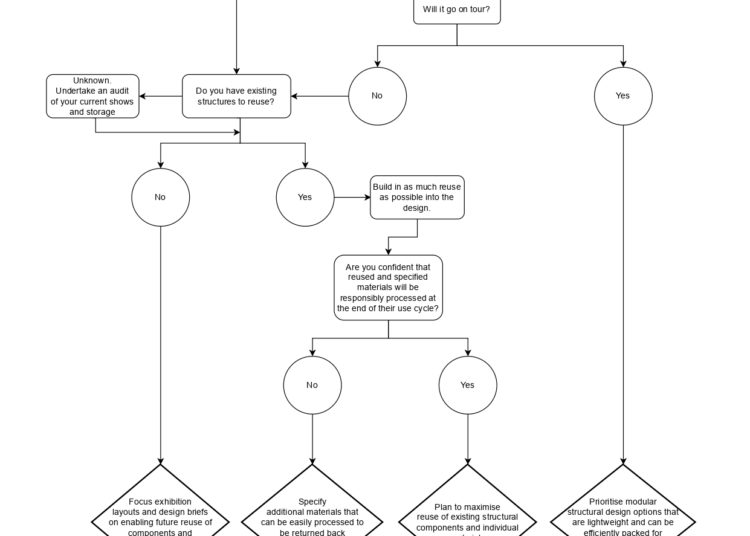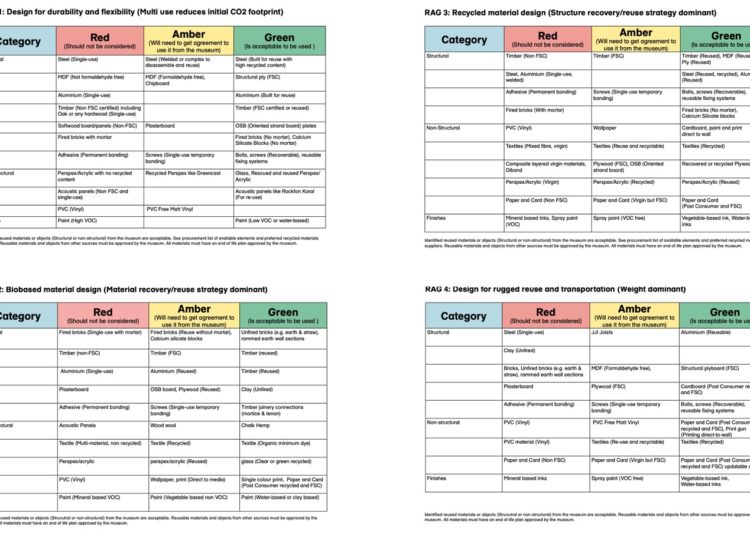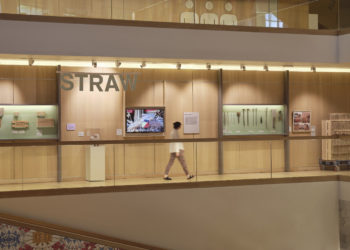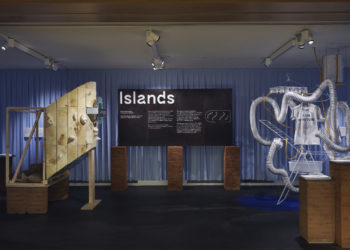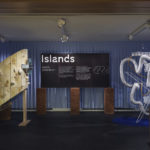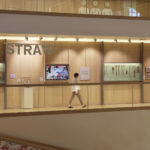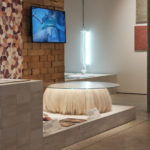The Design Museum London’s 2021 exhibition Waste Age: What Can Design Do?, which was presented to coincide with COP 26 in Glasgow, catalysed new ways of thinking across the museum. Significantly, it led to a new action research strand of activity, which interrogates the environmental impact of our exhibitions and displays, and invites all stakeholders involved in exhibition-making to consider if their choices of artworks, objects, collaborators and contractors, build materials and interpretation techniques are ‘worth the carbon’.
What next? An exhibitions toolkit
Following the close of the Waste Age exhibition in February 2022, we began considering how to approach the next phase – capturing learnings from Waste Age to share with other exhibition teams at the museum, and more widely with the sector. The outcome of this was a free guide to reducing the environmental impact of exhibitions, developed with URGE Collective which is available for download on the Design Museum website1. This document was produced with support from the Arts and Humanities Research Council (AHRC) part of UK Research and Innovation (UKRI) and the Design Museum’s Future Observatory research programme2.
The guide includes tools such as an Object Decision Tree to help curators decide if the inclusion of a certain object is ‘worth the carbon’. Other resources, such as the Material Decision Tree helps designers reduce the impact of their designs through selecting the most appropriate materials for the project. In instances where object travel is non-negotiable, a project team might wish to prioritise a low-impact build (which was our approach with the exhibition The Offbeat Sari, which opened in London in May 2023).
The guide also offers guidance on questions to ask designers and contractors during the procurement process, briefing stages and design review meetings.
Object decision tree
Taken from page 17 of the Exhibition Design for our Time guide, published by the Design Museum in February 2023.
Material decision tree
Taken from page 23 of the Exhibition Design for our Time guide, published by the Design Museum in February 2023.
Red/Amber/Green Material lists
Taken from pages 24 and 25 of the Exhibition Design for our Time guide, published by the Design Museum in February 2023.
Recent projects that have used the RAG material lists:
Testing and policy application
In the next phase of this work, which began in January 2023, the Design Museum sought to make these tools more robust by testing them with other national and international museums. We also developed a report supported by the Department for Culture Media and Sport which aimed to address the question of how the UK cultural sector will have to adapt to meet national net zero commitments. Key recommendations from this report included:
- Build institutional knowledge and embed more sustainable thinking in the exhibition development process.
- Include environmental impact data when commissioning designers.
- Use a standard carbon calculator for the sector to aid decision making.
- Research a certification scheme.
- Set carbon budgets.
- Consider touring at every stage.
- Research a system of re-using exhibition assets and material.
During this last year throughout the development of our projects at the museum, we have been testing the principles from the guide further and have gained additional internal feedback on the Impact Model (which is an Excel-based tool to help calculate the estimated carbon footprint for an exhibition). For The Offbeat Sari for example, which opened in London in May 2023, the 3D design team, Studio Mutt, used the decision trees and RAG lists to inform their material choices. This led them to work with the exhibition build company to select reusable and recyclable build materials and explore unusual solutions. From the outset, the touring considerations of this exhibition were woven into the brief and adaptability of the build was considered at every design stage. The team prioritised honeycomb cardboard and fabric walls which meant we could successfully reuse most of the build for the exhibition tour (the exhibition opens in the Netherlands in April 2024).
On this project we also worked with a company called Mannakin to select ex-retail mannequins saved from landfill, which we then refurbished with advice from textile conservators to ensure they were of high enough quality to display garments. This meant that, looking at the exhibition as a whole, while we shipped 57 saris (which packed up into small parcels) from India, the build balanced it out as a package.
We hope that in the future all museums will use the same or a similar calculator to standardise our reporting and obtain accurate data to inform new strategies.
What next? The future
Developing the design guide
We’re working with consultancy Culture Connect to translate and disseminate the guide at an international scale. Versions in other languages will be available on our website early 2024.
Benchmarking
At the Design Museum we are committed to using the Impact Model we have developed to calculate the CO2e of each exhibition and display that we open to the public in 2023. This data will enable us to benchmark different projects and set carbon budgets next financial year. The aim, of course, will be to reduce these budgets over time, as the goal of all this work is to reduce the emissions of our activities.
A new carbon impact tool
We are working with the Gallery Climate Coalition to support the development of a new, free carbon impact tool, developed with guidance from the UK Registrars Group (amongst others), for the international museums and gallery sector. We hope that in the future all museums will use the same or a similar calculator to standardise our reporting and obtain accurate data to inform new strategies.
New touring guidance
On the international side, Design Museum is planning to issue a suite of guidelines to support colleagues who work in the touring exhibitions sector.
Prioritising reuse
The Design Museum is also exploring the feasibility of setting up a Circularity Hub to test a sharing model for organisations in London.
Advocacy and Consultancy
We will continue to support other museums who are interested in trialling the toolkit. Developing this area of specialism, we are also setting up a consultancy structure for this work.
More locally in our neighbourhood of Kensington in southwest London, we are an active member of the South Ken ZEN+ group, an initiative run by the Exhibition Road Cultural Group which brings together 22 organisations in the area. Together, we are developing a joint toolkit to collectively report on our progress against Net Zero targets and are working on a shared procurement charter. In the spirit of collaborating to become greater than the sum of our parts, we are working together to ensure accountability, share resources, and not repeat work.
We must continue researching and learning, to become more aware of the complexities of this problem to understand where to focus our energies.
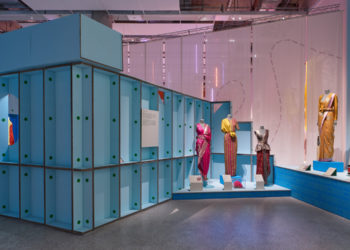
Conclusion
Climate change is here now and is impacting communities all around the world. July 2023 was the hottest month ever recorded – we saw horrific heatwaves and fires killing people and animals3. We know that on a macro level systems change is urgently needed. Research has shown that corporations are responsible for most of the world’s pollution4. However, on a more micro level, we must make committing to change a priority. We must continue researching and learning, to become more aware of the complexities of this problem to understand where to focus our energies.
What action can you take? It will depend on your specific context, your organisation’s USPs and the skills and passion points of your staff. At the Design Museum we have focused on where we can have the most impact in what we are already doing, where we have confidence, and where we have institutional expertise and support. This, alongside knowing why action is so important, motivates us to continue and helps sustain a long-term commitment. For most museum professionals, our contribution in this arena is to create well researched programmes, exhibitions and displays that raise awareness and catalyse a step change, and to reduce our emissions as much as possible while doing it.
How can you help? We’d love to hear from you. We are inviting colleagues in the sector to download the guide, test the impact model and let us know what you think – your feedback will help inform the new tool that will be released at the end of 2024. Work in this area is by nature iterative, and by understanding what the sector needs to reduce emissions, we can develop the best tools to help us all work smarter for the planet.
Individually, we are a drop. Together, we are an ocean. - Ryunosuke Satoro
1 designmuseum.org/working-to-make-change
2 In 2021, the Design Museum launched Future Observatory, a national research programme for the green transition. Coordinated by the Design Museum in partnership with the Arts and Humanities Research Council (AHRC), the programme will benefit over 100 higher education institutions and 75 industry and local authority partners across the nation. It is the largest publicly funded design research and innovation (R&I) programme in the UK.
3 On 8 August, 2023, the Copernicus Climate Change Service (the European climate monitoring organisation) confirmed that July 2023 was the hottest on record. The global average temperature was 0.33°C warmer than the previous warmest month, July 2019. Climate.copernicus.eu/july-2023-global-air-and-ocean-temperatures-reach-new-record-highs.
4 Reports show that since 1988, just 100 companies have been responsible for 71% of global greenhouse gas emissions. Sites.manchester.ac.uk/global-social-challenges/2022/07/07/corporations-vs-consumers-who-is-really-to-blame-for-climate-change.
Resources
DM toolkit designmuseum.org/learning-and-research/design-museum-research/working-to-make-change
Julie’s Bicycle juliesbicycle.com/resources
Museums Association museumsassociation.org/campaigns/museums-for-climate-justice/climate-resources-bank/
Gallery Climate Coalition galleryclimatecoalition.org
Exhibitions mentioned
Waste Age: What can design do?, by the Design Museum
The Offbeat Sari, by the Design Museum
Design Researchers in Residence 2022/23: Islands, by the Design Museum’s Future Observatory in partnership with the Arts and Humanities Research Council (AHRC)
How to build a low-carbon home, by the Design Museum

